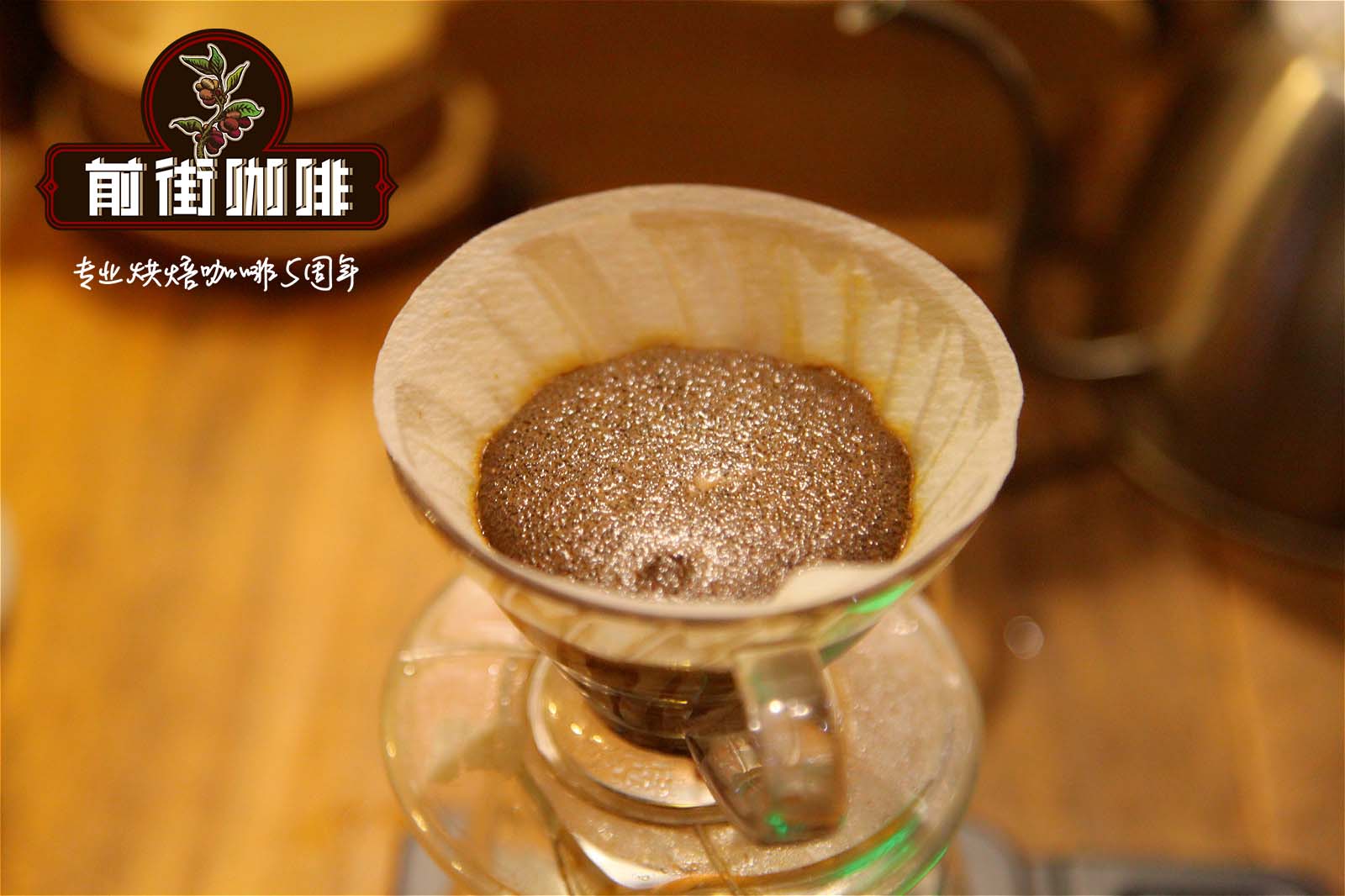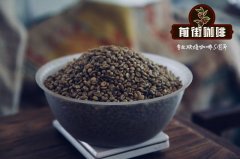What does the powder-to-water ratio of coffee mean? How to calculate the ratio of coffee powder to water?

Professional coffee knowledge exchange more coffee bean information please follow the coffee workshop (Wechat official account cafe_style)
Recently, some friends have asked the editor a question: is the golden cup extraction and gold cup theory often mentioned as the ratio of powder to water or the ratio of powder to liquid? Or to put it simply, we often recommend that the ratio of powder to water is 1:15. Does that mean 15 grams of water per gram of powder or 15 grams of coffee liquid per gram of powder?
Literally, the "powder-to-water ratio" of course refers to the ratio of coffee powder to water used for brewing. After all, once water is extracted, it becomes coffee liquid (no one would call it coffee water, would it? ), the ratio of coffee powder to coffee liquid should be called "powder-liquid ratio".
Let's simply refer to the daily earbag brewing data: for 10 grams of coffee powder, we use 150g (or 150ml) of hot water to cook it. Finally, when it is finished, the coffee liquid received will be about 130g, because the coffee grounds will still retain 1.5 times the dry weight of water, that is, after 10 grams of powder is extracted, a series of complex calculations such as extraction rate and evaporation Barbara will be left. About 15 grams-20 grams of water will be absorbed. In this case, the powder-to-water ratio is 10g of powder: 150g of water = 1:15, and the ratio of powder to liquid is 10g of powder: 130g of coffee liquid = 1:13.
Of course, the definition of this powder-to-water ratio is based on the premise that the water used for cooking should basically flow from the container or filter, and there should not be too much water left.
Many people's ideas about the ratio of powder to water come from the Golden Cup Theory and Golden Cup Criterion, because the Golden Cup Criterion suggests 1RV 16.7,1:17, 1Rd 18.18. In fact, the powder-to-water ratio in the gold cup theory, water refers to the total amount of water injected, all the water involved in the extraction process, 1:17 equals 10g of powder to extract with 170g of water, and let the water flow out of the container.
So why do people still insist on the final amount of extraction as the basis for cooking parameters rather than a more accurate total amount of water injection?
According to the editor's observation and research, there are probably the following situations:
1, some people's cooking methods, will not let all the water in the filter cup run out.
This technique is mainly used by Taiwan and Japan, and this is the case with the Japanese-style "drip method". In the last stage of water injection, all the powder is rolled up with a large flow of water, but the filter cup is removed immediately after the final tumbling is finished. to avoid fine powder settling blockage and foam sinking out (some people think that the foam in the filter cup contains bitter substances and cannot be picked up).
If all the water in the filter cup does not run out, then it is meaningless to calculate the total amount of water injected. Instead, by observing the scale in the sharing pot and calculating the ratio of the final extract to coffee powder, it is necessary to be accurate. At least the extraction rate of each product can be close to each other.
2. Some people's cooking habits are based on the scale of the sharing pot, but there is no demand for electronic scales.
In some of the more traditional schools, it is very rigorous to pay attention to the feel and sensory experience in the cooking process, requiring the use of eyes, nose and fixed water injection instead of electronic scales. Let's not talk about who is right and who is wrong, but since this school does not use electronic scales at all, calculating the total amount of water injected cannot be used as a reference in the cooking process-unless you first weigh the right amount of water and then heat it up. Then the water injection is just finished.
3. Some people are just used to fighting with their hands.
In the case of using a hand punch frame, you can't measure the amount of water on the filter cup-you can't buy a big scale and put it on the upper hand frame to weigh it. At this time, the final amount of extraction can only be used as the basis for extraction. No matter looking at the scale or adding an electronic scale, it is impossible to accurately control the amount of water in the filter cup, so this cooking method is still unable to calculate the total amount of water injection, only the final amount of extraction.
Finally, in fact, there are some people who are relatively pure. Because from the beginning, when they learn hand punching, it is based on the final amount of extraction as the basis of cooking parameters. It has been used all the time.
How to convert the ratio of powder to water and the ratio of powder to liquid?
Finally, how to convert the ratio of powder to water and the ratio of powder to liquid? In fact, it is not difficult, as mentioned earlier, coffee grounds about absorb their own dry weight of 1.5ml of water twice the weight of water, then the powder-to-water ratio and powder-to-liquid ratio, that is, a difference of 1.5Mel 2. For example, if the ratio of powder to water is 1:15, it is equivalent to the ratio of powder to liquid. When meeting some colleagues who are different from their own techniques and algorithms, as long as they are simply secretly converted, they can be compared with their own parameters for reference.
As a matter of fact, the editor does not look down upon any kind of practice or algorithm, and its existence is reasonable. Since some people use it and can be handed down, it naturally has its advantages, naturally because someone can also make good coffee with this algorithm, isn't that enough?
The golden cup criterion is not a standard for brewing, it is just a suggestion and a reference. Brewing that is not in the golden cup criterion does not necessarily mean that it tastes bad, and coffee extracted from the golden cup may not necessarily taste good. As long as you can brew stable and delicious coffee, whether it is undefined, golden cup or not? The key is to understand and communicate with each other, to learn and make progress together.
Related recommendation: is hand-made coffee really good? Why does coffee smell better than it tastes?
Important Notice :
前街咖啡 FrontStreet Coffee has moved to new addredd:
FrontStreet Coffee Address: 315,Donghua East Road,GuangZhou
Tel:020 38364473
- Prev

Can coffee beans be drunk after a long time? How to make coffee beans that have been aged for a long time
Professional coffee knowledge exchange More coffee bean information Please pay attention to coffee workshop (Weixin Official Accounts cafe_style) Everyone must have had experience: coffee for a long time, you are lost? Or do you continue to use it and reluctantly drink a cup of bland coffee? Is expired coffee irretrievable? The following small series to share with you today's topic expired coffee how to do hand flushing
- Next

How much water does it take to steam coffee?
Professional coffee knowledge exchange More coffee bean information Please pay attention to coffee workshop (Weixin Official Accounts cafe_style) 01| Steaming is a very important step in the brewing process of hand brewed coffee, which means the beginning of coffee extraction. Let's first understand the process of coffee steaming from a physical point of view. The microscopic structure of the coffee powder is actually a honeycomb-like knot
Related
- Beginners will see the "Coffee pull flower" guide!
- What is the difference between ice blog purified milk and ordinary milk coffee?
- Why is the Philippines the largest producer of crops in Liberia?
- For coffee extraction, should the fine powder be retained?
- How does extracted espresso fill pressed powder? How much strength does it take to press the powder?
- How to make jasmine cold extract coffee? Is the jasmine + latte good?
- Will this little toy really make the coffee taste better? How does Lily Drip affect coffee extraction?
- Will the action of slapping the filter cup also affect coffee extraction?
- What's the difference between powder-to-water ratio and powder-to-liquid ratio?
- What is the Ethiopian local species? What does it have to do with Heirloom native species?

